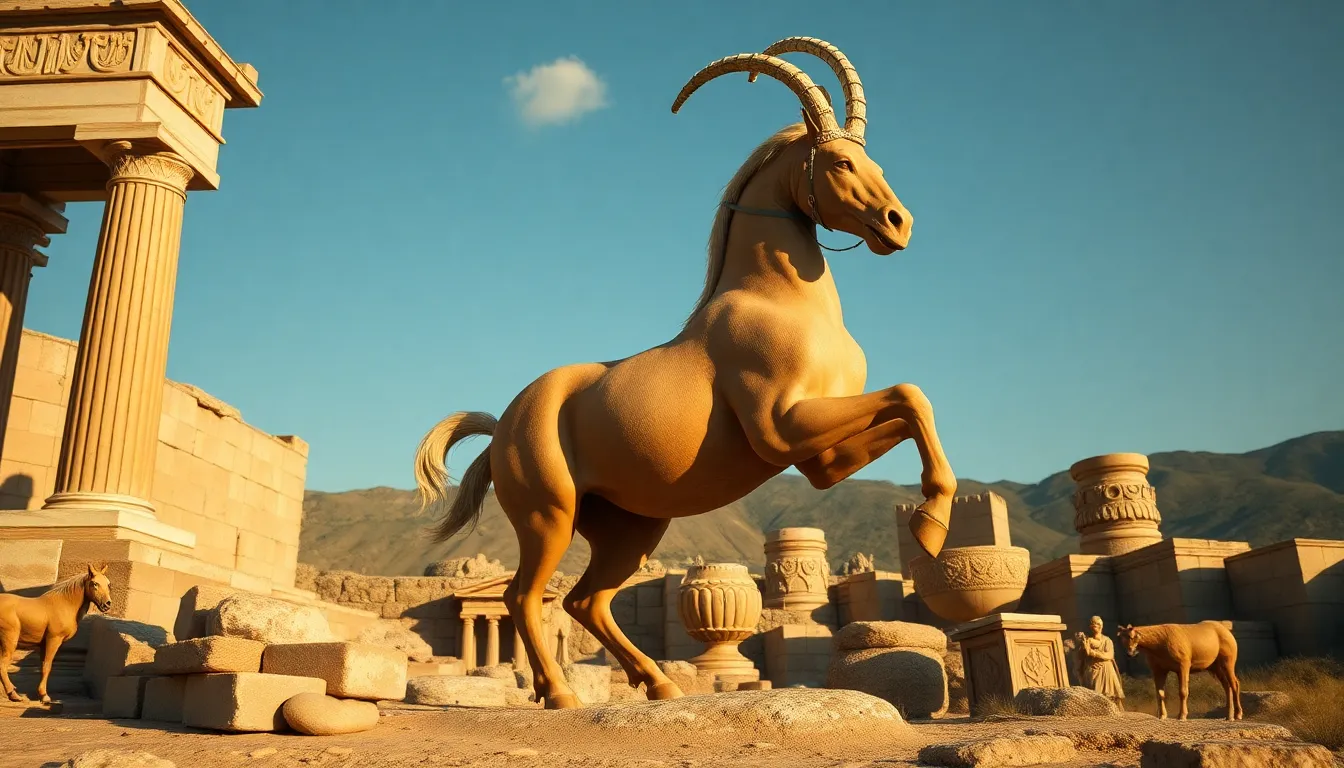The Centaur in Modern Cinema: A Cultural Analysis
I. Introduction
The centaur, a creature from Greek mythology, is depicted as having the upper body of a human and the lower body of a horse. This unique hybrid embodies duality and the complex nature of existence, making it a fascinating subject for study.
In contemporary cinema, centaurs have taken on varied roles, often serving as symbols of conflict, identity, and the struggle between civilization and nature. Their portrayals reflect not only the myths that inspired them but also the societal issues we face today.
This analysis aims to explore the significance of centaurs in modern films, examining their historical context, symbolic meanings, and cultural impact.
II. Historical Context of the Centaur in Mythology
Centaurs have their origins in ancient Greek mythology, where they were often depicted as wild and unruly beings, embodying the untamed aspects of nature. These creatures were typically portrayed as the offspring of Ixion, a mortal king, and a cloud created by Zeus, further emphasizing their dual nature.
Symbolically, centaurs represent the struggle between civilization and barbarism. They were often characterized by their affinity for revelry and violence, yet some, like Chiron, were revered for their wisdom and healing abilities. Over time, the centaur archetype has evolved:
- Primitive Beings: Initially, centaurs were seen as savage creatures.
- Wise Mentors: Figures like Chiron transformed the perception of centaurs into that of knowledgeable guides.
- Modern Interpretations: Today, centaurs symbolize the complexities of human identity and nature.
III. The Centaur as a Metaphor for Duality
The centaur serves as a powerful metaphor for the human-animal dichotomy, encapsulating the constant conflict between our primal instincts and civilized behavior. This duality is reflected in the characteristics of centaurs, who often struggle with their animalistic urges while maintaining a semblance of human reason.
In modern films, centaurs are frequently depicted as characters wrestling with their identities. Their narratives often explore themes of:
- Inner Conflict: The tension between their human and animal sides.
- Balance: The search for harmony between nature and civilization.
Examples of this duality can be seen in various films, where centaurs face personal challenges that mirror broader societal conflicts.
IV. Case Studies: Prominent Centaur Figures in Film
A. Analysis of centaur representations in animated films
Animated films often simplify the centaur’s duality but still convey significant messages. In Disney’s Hercules, for instance, the centaur Philoctetes is portrayed as a mentor figure who helps Hercules discover his true potential. His character embodies wisdom and guidance, countering the traditional view of centaurs as chaotic beings.
Similarly, in The Chronicles of Narnia, the centaur Mr. Tumnus serves as a bridge between the human world and the magical realm, representing the struggle for identity in a world filled with conflict.
B. Live-action portrayals and their cultural implications
Live-action films tend to delve deeper into the implications of centaur characters. In the Harry Potter series, centaurs like Firenze highlight themes of prejudice and acceptance. Firenze’s role as a professor at Hogwarts challenges the perceptions of centaurs as mere beasts, showing them as complex beings capable of profound wisdom.
The Percy Jackson films also feature centaurs, where Chiron serves as a mentor to the protagonist. His character encapsulates the struggle between the wild nature of centaurs and their potential for wisdom, reflecting broader themes of mentorship and guidance in the face of adversity.
V. The Centaur’s Reflection of Contemporary Issues
As centaurs continue to appear in modern cinema, they often reflect contemporary issues that resonate with audiences today. Key themes include:
- Identity and Belonging: Many centaur characters grapple with their place in the world, mirroring the struggles of individuals seeking their identities.
- Critique of Societal Norms: Centaurs often challenge societal expectations, representing those who defy conventional roles.
- Environmental Interpretations: As hybrids of man and beast, centaurs symbolize the need for harmony with nature, addressing ecological issues.
VI. Audience Reception and Cultural Impact
The centaur’s portrayal in films has garnered significant popularity, contributing to their cultural impact. Audiences are often drawn to these characters due to their complexity and relatability.
Key points of audience reception include:
- Appeal: Centaur characters resonate with viewers, often representing the struggle for self-identity.
- Interpretations: Audience reactions vary, from viewing centaurs as symbols of chaos to seeing them as wise guides.
- Influence on Fan Culture: Centaurs have inspired a range of merchandise, fan art, and online communities celebrating their unique characteristics.
VII. The Future of the Centaur in Cinematic Storytelling
As the landscape of cinema evolves, so too does the representation of centaurs. Emerging trends suggest potential new directions:
- Diverse Narratives: Future films may explore centaurs from varied cultural perspectives, enriching their backstories and roles.
- Complex Characterization: Audiences may demand more nuanced portrayals that reflect contemporary societal issues.
- Relevance in Cultural Narratives: As society grapples with environmental and identity crises, centaurs remain a relevant symbol of the human condition.
VIII. Conclusion
In summary, the centaur’s role in modern cinema is multifaceted, reflecting a rich historical context and a wide array of symbolic meanings. From embodying the struggle between civilization and nature to serving as metaphors for personal conflict, centaurs continue to captivate audiences.
The enduring legacy of the centaur in contemporary films underscores its significance as a cultural narrative, reminding us of the complexities of identity and the balance between our primal instincts and civilized selves. As we look to the future, centaurs will undoubtedly continue to evolve, offering new insights into the human experience.




